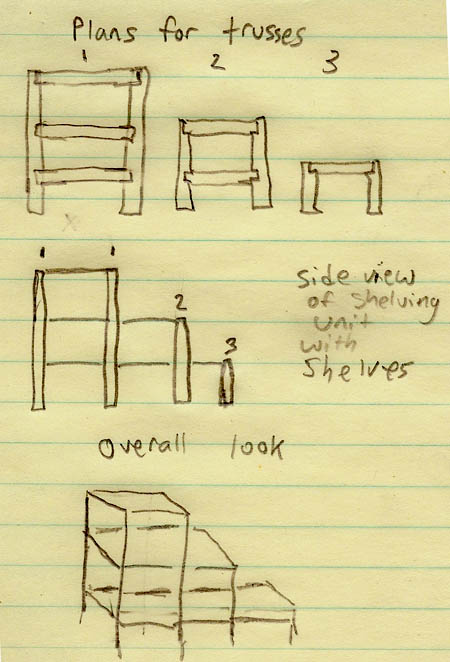|
|
|
shelf trusses
Friday, September 30 2011
This morning I went to use my main computer Woodchuck and I found that half of its four monitors weren't displaying anything. I fiddled with the cables, thinking maybe a cat had knocked them loose, but soon the evidence was in: one of my two Nvidia Geforce 9400GT cards had died. I confirmed this by trying the seemingly bad one in my Hackintosh, and sure enough it was dead. This was, by the way, one of the very few times I've ever experienced the failure of a solid state device that had nothing to do with power, moving parts, or various forms of mechanical failure. The most similar sort of failure to this one I've seen was a failure of one of my LCD monitors, but that was due to a bad electrolytic capacitor in its power system. (Now, though, that monitor is showing a thin blue vertical line through the picture, a seemingly unfixable semiconductor failure.)
I'm spoiled when it comes to my four monitors, and I didn't think I'd be able to manage with just two for the time it would take a replacement PCI Express video card to arrive. Happily, though, I managed to root around through my collection of video cards and find a working PCI card (though not a PCI Express card) capable of supporting two monitors. In normal use, a PCI card is perfectly fine, in fact I don't know why I insisted on running all my monitors off PCI Express.
Meanwhile, after several reinstalltions of OSX Snow Leopard onto my Hackintosh, I finally was able to get it to boot off the hard drive. Getting it to work required avoiding the installation of several features via Multibeast, including network and audio support. I don't know how I'm ever going to get usable Hackintosh without those things, though it would probably involve some other method of device installation.
Today I began work on the skeleton for the new prism-shaped shelving unit for the laboratory. This unit, as I described it yesterday, would fill the prism-shaped space behind an existing shelving unit and reach up to the wall-ceiling, which slopes at 45 degrees. Access to its shelves would be from either side. I'd decided to build a skeleton of four trusses upon which the shelving planks would rest. Two of the trusses would be 48 inches tall and have crossbars for three shelves, one of the trusses would be 32 inches tall and have crossbars for two shelves, and the last would be 16 inches tall and shaped like the Greek letter pi (π) and have a single crossbar for one shelf. You can see the general plan below, though it lacks some diagonal braces designed to keep the trusses square.

For linking purposes this article's URL is:
http://asecular.com/blog.php?110930 feedback
previous | next |
